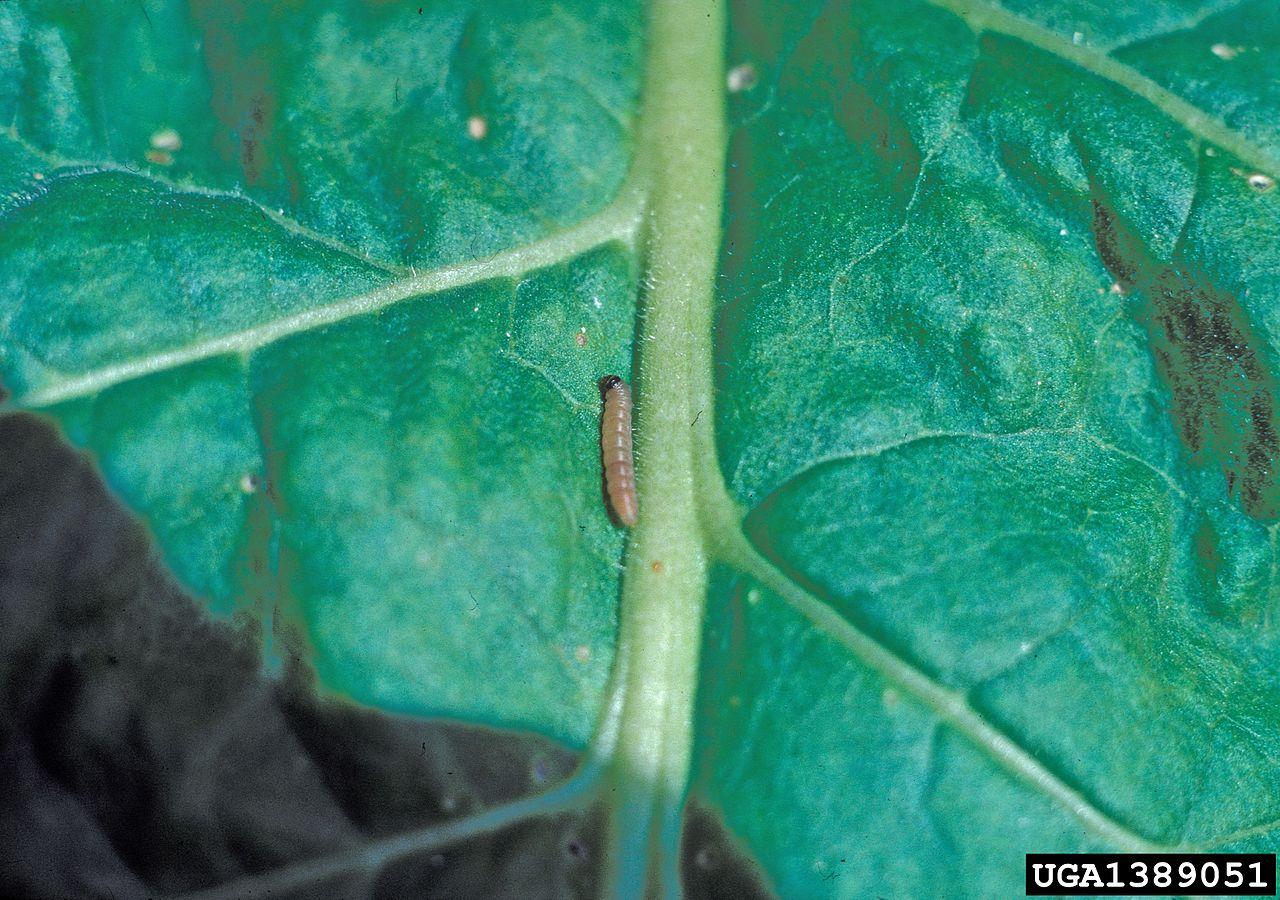
Photo: J. Linduska
Appearance
- Potato tuberworms are the larvae of an inconspicuous moth.
- Pink to white larvae reach ¾ inch in length and feed between leaf surfaces (leaf-mining injury) and tunnel into stems.
Life cycle/habits
- The adult lays eggs on the foliage, and the larvae mine leaves (feed between leaf surfaces) and bore into stems.
- Foliar damage is usually minor.
- Larvae drop to the soil and find their way to poorly covered tubers. They then bore deep tunnels that are usually filled with black fecal material and fungi.
- Tuberworm overwinters as a pupa in plant residues.
- Adult moths emerge in the spring and eggs are laid on the undersides of host plants.
- Later generations of eggs are laid on the eyes of poorly covered potato tubers that larvae tunnel into.
- Hot, dry weather favors this pest.
Host plants
- Potato leaves (they may also attack other members of this family- tomato, eggplant, pepper).
Signs/symptoms
- The adult lays eggs on the foliage, and the larvae mine leaves (feed between leaf surfaces) and bore into stems.
- Foliar damage is usually minor.
Prevention/control
- Use row covers to protect foliage from egg-laying adults.
- Keep tubers covered by two inches or more of soil to keep larvae from reaching tubers.
- Incorporate organic matter and use thick heavy mulches to interfere with pest movement and egg-laying.
- Monitor plants for signs of this pest and remove those that are infested.
- Clean up all plant residues at the end of the season.
